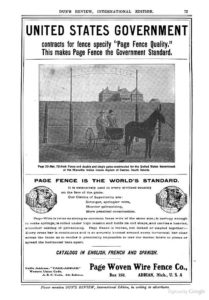 The city of Canton, SD was proud of its asylum, and it was certainly a building that looked good. With electric lights, indoor plumbing, and coal heat, the building was probably a step up from what many residents enjoyed themselves. The town itself already had an impressive courthouse building, a railway depot, a college, hotels, a large Chautauqua auditorium for lectures and public programs, and an expansive fairgrounds.
The city of Canton, SD was proud of its asylum, and it was certainly a building that looked good. With electric lights, indoor plumbing, and coal heat, the building was probably a step up from what many residents enjoyed themselves. The town itself already had an impressive courthouse building, a railway depot, a college, hotels, a large Chautauqua auditorium for lectures and public programs, and an expansive fairgrounds.
The town was a popular tourist destination, and a relocated shipbuilder named M. M. Hanson built passenger boats that allowed pleasure-seekers to take excursions down the Sioux River. His first boat (The City of Canton) held 100 passengers, and his second (Sioux Queen) held 200. Hanson also owned 30 row boats he hired out.
Canton’s population of around 2,000 (in 1900) could not have supported all the activities and institutions it hosted, and the city relied on tourists to help bring in dollars. The Canton Asylum for Insane Indians was itself a tourist attraction, and visitors to the area were urged to stop and tour it while they were in town. Spoons, plates, postcards, and small cloth items were a few of the souvenirs tourists could pick up in town; they could also buy bead work and other craft items at the asylum from patients who earned money by creating and selling their handiwork.
It would have been an economic blow, indeed, for the town to lose the institution. This was especially true during the Depression (it closed in 1933), when many people depended heavily on the wages that the asylum generated.

